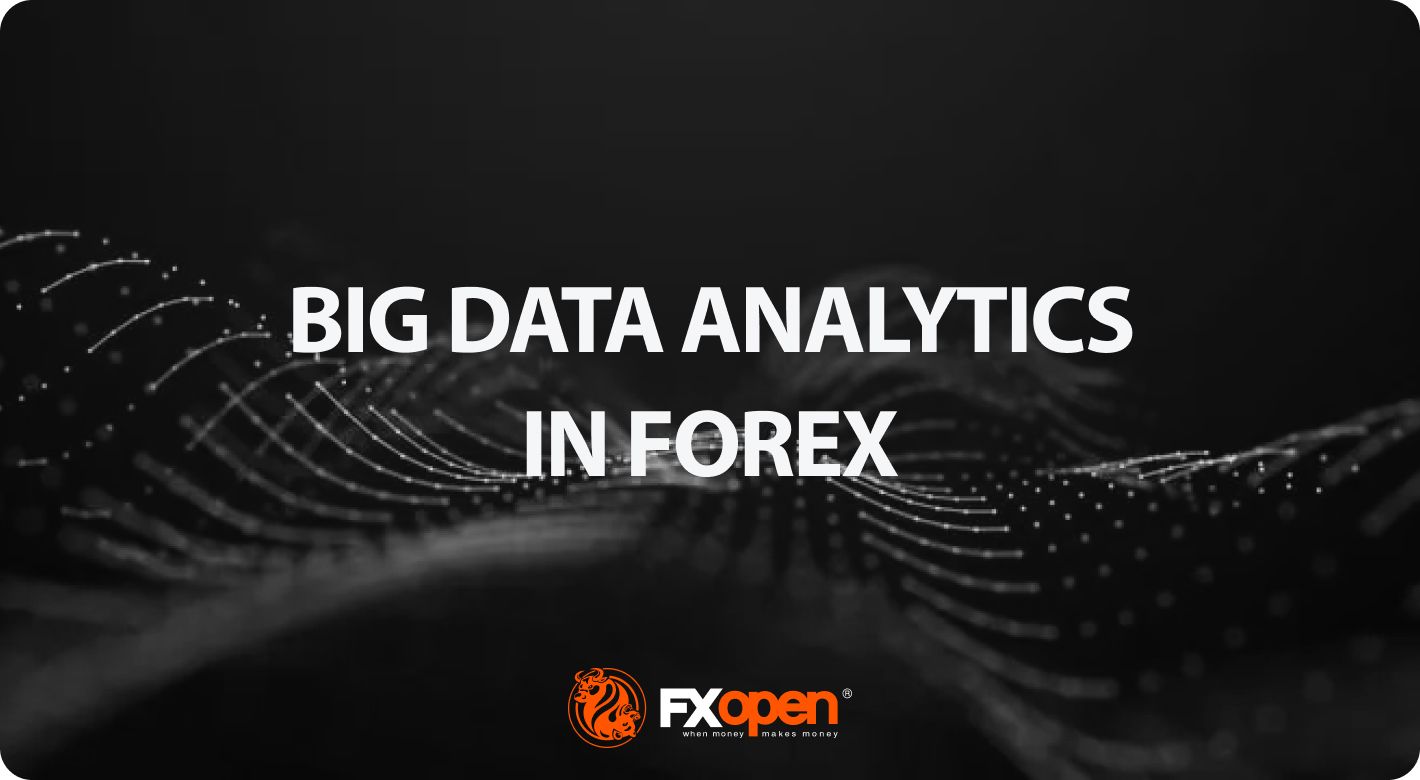FXOpen

Recent years have seen explosive growth in the amount of data in circulation, and the financial industry is no exception. The use of big data analytics in forex trading has become increasingly popular as traders and institutions look to gain a competitive edge through the analysis of vast data sets.
The forex market is the largest financial market in the world, with a daily turnover of trillions of US dollars. The market is constantly changing. One might argue that such a tendency to change makes it difficult for traders to make decisions. Therefore, the use of big data in forex analytics acts as an essential advanced tool and serves as a means to overcome decision-making challenges.
This FXOpen article explores why big data in trading has the potential to revolutionise the way traders approach the market and looks into how it can provide them with valuable insights.
Big Data in Forex Trading
Big data refers to the large quantity of diverse information that is generated every day from a variety of sources. Such volumes of information cannot be processed and analysed by users or simple office software. Therefore, there’s a whole set of sophisticated technologies designed for working with it.
The set typically includes tools for data collection, storage, preprocessing, cleaning, and analysis. To collect and store large amounts of information, traders use cloud computing and distributed databases. Before analysing it, traders preprocess and clean it to remove any noise or inconsistencies using techniques such as normalisation and outlier detection.
In the context of forex trading, big data includes market figures, economic indicators, social media sentiment, news articles, and more. The role of big data in forex is enormous. With the help of analytics, traders can select relevant, promising assets and make informed trading decisions, thereby gaining a competitive advantage.

Sources of Big Data in the Forex Market
Predictive analytics and big data provide actionable insights about the FX market and the general mood of market participants. Here are some of the sources incorporated into big data models used for forex trading purposes:
- Market figures — real-time and historical price, order flow, and trade execution data.
- Economic indicators — figures of inflation, GDP, employment, various indices, earnings reports, industrial production figures, and other economic indicators.
- Social media sentiment — comments from social media platforms such as Twitter, LinkedIn, and Facebook, which provide insights into public sentiment towards certain countries and their currencies.
- News articles — articles from financial news sources such as Bloomberg and Reuters, which inform traders about market trends, governmental policies, and major events.
How Big Data Analytics Affect Forex
Big data analytics significantly impact forex trading, offering both advantages and challenges. Let’s first explore how big data analytics can help in forex trading.
Pros:
- Improved forecasting and predictive modelling
- Real-time market monitoring and analysis
- Enhanced risk management and decision support
Analysing big data helps traders uncover future market movements and identify patterns that may not be visible through traditional analysis methods. It can provide traders with real-time insights into current trends and high-impact economic events, which allows them to react quickly to changes. Analytics can also simplify risk identification and management.
These benefits make big data analytics a key tool for renowned and successful financial institutions. For example, JPMorgan Chase uses it to analyse millions of transactions daily, detect suspicious patterns, and prevent fraudulent activities and money laundering. Meanwhile, the investment bank Goldman Sachs uses it to identify trends in various markets, improve the company’s trading strategies, and enhance risk management.
Despite the inspiring cases and the benefits of using it, big data analytics is not a cure-all and has some downsides.
Cons:
- Requires significant resources
- Possible security issues
- Possible overfitting
Since big data analysis requires significant computing power and storage, as well as high bandwidth, using this approach is not cheap, and it can be problematic for retail traders and trading start-ups. Besides, big data analytics involves collecting sensitive financial information, which is often targeted by cyberattacks. Unintentional breaches are also possible, so companies employ additional security algorithms. This can increase costs as well.
Another issue comes when the data analysis model fits too closely to its training basis. Overfitting makes it unable to perform accurately against unseen information. It is related to the issue of capturing patterns without being overly influenced by irrelevant information. If traders rely on algorithms to analyse data, this drawback could hinder their performance.
Risk Management in Big Data-Driven Trading
Based on the limitations and possible problems with large-scale analyses, the question of risk management in the use of big data arises. Here are some considerations on what a trader could do to minimise risks.
- Traders use risk controls and backtesting to check whether trading strategies are effective and not overly risky.
- To ensure that the figures are accurate, consistent, up-to-date, and reliable, traders may implement quality control measures such as data validation and verification.
- Leveraging different sources of big data allows traders to drive their risk management strategies with more confidence as they get a holistic picture of the currency market.
Big Data Analytics Strategies in Forex
The most popular big data forex trading strategy involves using traditional technical and fundamental analysis, which is enhanced by additional insights and information obtained through big data analytics.
Then comes trading based on sentiment analysis and social media monitoring. As mentioned, social media is necessary to understand how the trading community feels about the currency and whether they think it is a good decision to trade it.
Lastly, big data analytics improves algorithmic trading, which involves using computer programs to execute trades automatically based on predefined rules. Big data analysis may be helpful in determining these rules.
Final Thoughts
The use of big data in forex trading and analysing vast amounts of information helps traders gain valuable insights into market trends and make more informed decisions. However, there are also challenges and limitations associated with big data analytics, including overfitting and cybersecurity threats.
If you want to trade in the forex market, you can open an FXOpen account. To create and test trading strategies, you can use the TickTrader trading platform. Alongside trading tools and various assets, there are advanced charts with accurate price history.
This article represents the opinion of the Companies operating under the FXOpen brand only. It is not to be construed as an offer, solicitation, or recommendation with respect to products and services provided by the Companies operating under the FXOpen brand, nor is it to be considered financial advice.
Stay ahead of the market!
Subscribe now to our mailing list and receive the latest market news and insights delivered directly to your inbox.








